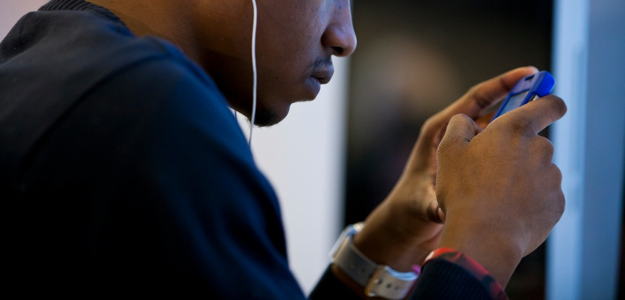 It may seem as if everyone in the world has a cellphone these days, but that’s nowhere near true just yet. A recent report states cell traffic has doubled in the past year, and it’s a trend that’s set to continue for quite some time.
It may seem as if everyone in the world has a cellphone these days, but that’s nowhere near true just yet. A recent report states cell traffic has doubled in the past year, and it’s a trend that’s set to continue for quite some time.
Ericsson released new research on Monday that showed that global data traffic on mobile networks – which does not include Wi-Fi Internet signals – hit around 1,300 petabytes per month by the end of last year. The rise is an almost 100 percent growth on the size of traffic for the same time period in 2011, as well as a 28 percent jump from the previous quarter. This increase is, the company claims, in part down to existing subscribers using more data on a regular basis, and also the growing number of subscribers.
“In Q4 [2012], mobile broadband subscriptions grew ~125 million to 1.5 billion, reflecting a 50 percent year-on-year increase,” the report states, going on to suggest that we can expect even more of the same in the future. “There is continued strong momentum for smartphone uptake in all regions,” the report explains. “Approximately 40 percent of all mobile phones sold during 2012 were smartphones, compared to around 30 percent for the full year 2011. Only around 15 to 20 percent of the worldwide installed base of mobile phone subscriptions uses smartphones, which means that there is considerable room for further uptake.”
While global smartphone penetration may only rest at 15 to 20 percent, overall global cell penetration is far higher – around 89 percent, Ericsson reports. Of that 89 percent, Europe, Latin America, the Middle East, and North America lead the way with a staggering higher than 100 percent penetration rate. This means each person has, on average, at least one subscription. Central and Eastern Europe has 133 percent mobile phone penetration, followed by Western Europe (128 percent), Latin America (112 percent), and North America trailing with “just” 103 percent penetration. The Asia-Pacific region – excluding China and India – are close behind, with 99 percent cell penetration, and China itself following with 82 percent.
Overall, Ericsson’s report points to a future where cell usage is so dominant that people have more than one phone, and smartphone usage is really just beginning – which doubtlessly pleases cell companies. It is already pretty common for people own separate work and personal cellphones.
However, it is possible that Ericsson is being far too optimistic in its take on the market as is, as Cisco’s most recent report on the subject is considerably more downbeat, suggesting that global data traffic only peaked at 885 petabytes at the end of 2012, not 1,300, and that that number is only 70 percent higher than the same period the year earlier (Cisco’s estimate for Q4 2011 was 520 petabytes, lower than Ericsson’s 600+ for the same period). A report on GigaOm also suggested that cell data growth slowed at the end of last year, so use these numbers as an indicator of general trends.


